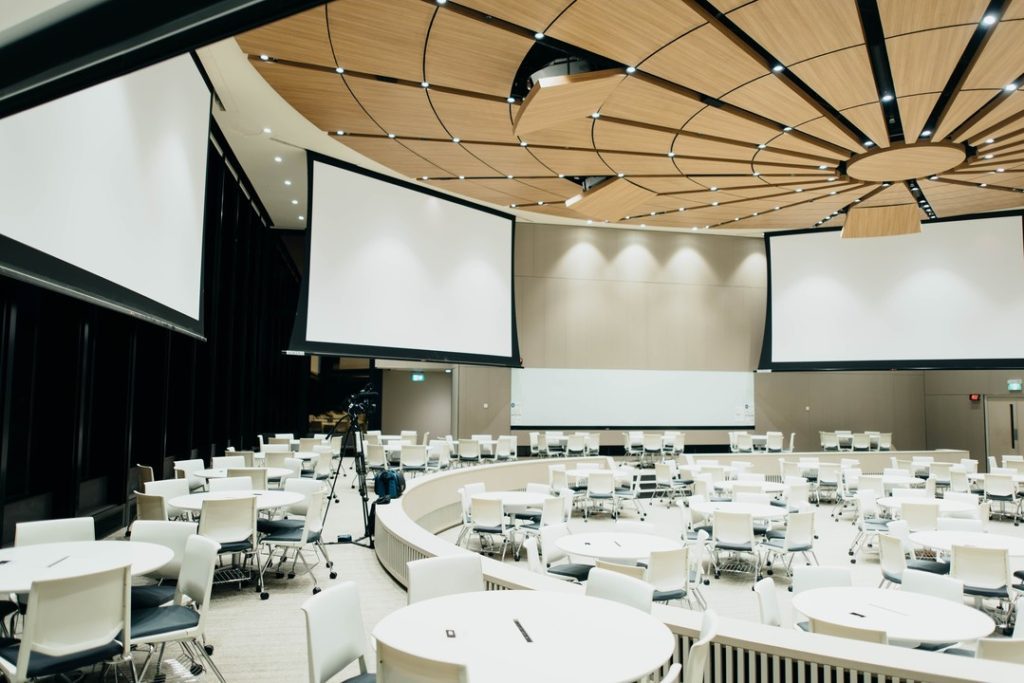It may be difficult for some to imagine a post-COVID world, but we are closer to that than we may realize. Many workplaces have been preparing to return to the office by setting up new technologies like touchless AV technology in meeting rooms, remote access control systems, and mobile check-ins for guests. Studies have shown that most employees intend to return to the office either full-time or on a hybrid schedule. Understandably, some might be apprehensive about going back into a physical work setting, given the shared spaces and exposure to germs on everyday physical items like doors and screens.
So, what exactly will the “new normal” look like in terms of the workplace? The idea is to limit the number of commonly-shared spaces and items that people touch to give everyone peace of mind. This will involve using voice-operated, gesture-activated, or mobile devices to turn on equipment, unlock doors, and check-in visitors. The future workplace will look different for each business based on their employees’ needs, which will vary based on the work culture and geography of the space. Regardless, with the evolution of new, widely available AV technology, some changes need to be implemented to make conference rooms as safe as possible.
Collaboration is one of the biggest reasons for employees to come back into the office. Not only is it easier to work on projects together in a common space, but most home offices do not have the AV equipment that offices do, such as multiple, large display screens, and pro-level audio/video teleconferencing equipment. In a shared space, these equipment and lighting controls, input cables, and AV touch panels can be optimized to reduce the need for employees to touch the same surfaces during a meeting. Here’s how.
Say it
Just as we have become accustomed to our Alexa or Siri-operated devices to control lights, doors, and other appliances in our homes, this will likely translate to an office environment as well. Employees will use their voices to ask virtual assistants to handle basic tasks like unlocking doors, turning on display screens, making calls, and booking meetings and conference rooms. Consider voice command in long-term technology plans for your office. If you want to implement voice-activated controls in your meeting space, we recommend working with a trusted partner, as there are multiple steps involved, important security considerations to take, and experts can offer the most clarity on what exactly voice-activated control can do in a business meeting setting and if it is the best solution for a particular organization.
Using sense
Sensors are widely used in cars and automated doors, and other use cases, but one of the easiest ways to make your meeting rooms safer is by implementing an occupancy sensor. These sensors recognize when someone walks in proximity to it and can be programmed to automatically turn on screens, adjust lighting and sound, and can be timed to shut down automatically after a meeting is over when the room clears out.
Go wireless
When employees settle into a conference room for a meeting, everyone usually spends the first few minutes connecting laptops to cables and wires to use various screens or equipment. Enabling wireless setup will not only allow for a more seamless meeting, but it will significantly cut down on the number of wires and screens anyone needs to touch. Wireless functionality can be easily implemented into new or existing AV systems. Rather than connecting to physical input, a wireless system will display a code, usually a four-digit number, for meeting attendees to use, allowing them to connect and share their presentations by simply entering the code on their laptops or other devices. The code system is also secure because it changes with each meeting.
There’s an app for that.
Apps are a great way to enable remote and in-person meeting attendees to control the AV system settings wirelessly. Each attendee can download a free app on their smartphones and adjust lighting, sound, and video settings. The smartphone can connect wirelessly to the touch panel using Bluetooth technology. Businesses will need to purchase a license to enable the Bluetooth feature to access the touch panel, but most smartphone apps are free to download.
Every business will determine what makes the most sense and what is best for its people. However, going back to the way things operated in a typical office before COVID is not an option. A post-COVID technology roadmap should be a part of your plan to ensure a safe work environment and show employees that their physical and mental health is a top priority when returning to the office. Whether you implement one or a combination of the technologies mentioned, it is best to work with a trusted partner to ensure the best outcome.
If you need support determining what this means for your office and the best technologies to implement for your workspace, reach out to our team of experts here.



